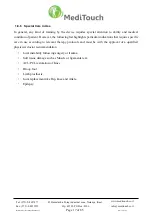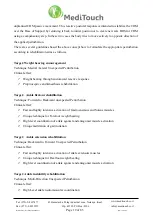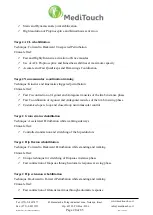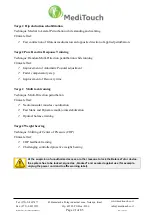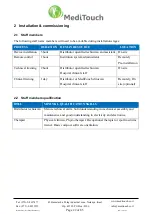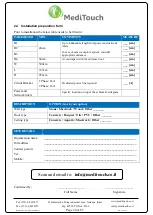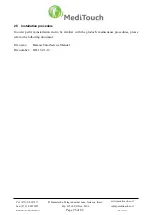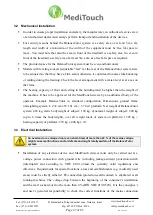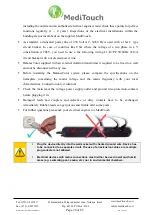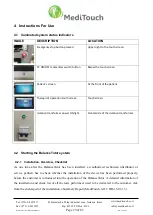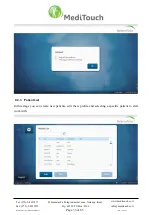
Page 18 of 85
www.meditouch.co.il
info@meditouch.co.il
Tel: (972)-9-8637477
Fax: (972)-9-8852935
45 Hamelacha, Poleg industrial zone, Netanya, Israel.
Zip: 42505, PO Box: 8306
DO-15-01-02
BalanceTutor user manual 200824.doc
1.9 Forbidden use
–
Contraindications
Any kind of medical problems including cardiovascular, mental or physical impairment leading to an
inability to use the system are contraindicated for using of the device. The following
contraindications must be taken into account before using of the BalanceTutor:
Patients who are not able to stand or walk without walk aid devices or external assistance.
Body weight greater than 135 kg
Severely fixed contractures
Bone instability (non-consolidated fractures, unstable spinal column, severe osteoporosis)
Open skin lesions in the area of the lower limbs and torso
Unstable circulation
Cardiac (blood) contraindications
Uncooperative or (self) aggressive behavior, such as transitory psychotic syndrome
Severe cognitive deficits
Patients with (long-term) infusions
Mechanical ventilation
Severe vascular disorders of the lower limbs
In general, patients who have been ordered to remain in bed or immobile due to, for instance,
osteomyelitis or other inflammatory/infectious disorders
The above list does not claim to be exhaustive. The decision as to whether a patient is suitable for
treatment always comes under the remit of the physician in charge, who has sole medical
responsibility for the treatment. As part of this, he must evaluate in particular, in each individual
case, possible risks and side-effects of the treatment against the benefit gained from it. In addition,
the patient’s individual situation plays just as important a role as t
he basic risk assessment for
specific patient groups.
Being a scientific discipline, medicine is subject to constant change in response to new knowledge
and progress. It is therefore the task of the physician in charge to continually keep his knowledge up
to date by reading the latest scientific literature and to acquire new knowledge during the course of
treatment.
1.10 Clinical guidelines
When an unexpected perturbation is happening, Center of Mass (COM) is passively moving toward
the perturbation direction. The body needs to react immediately (70-120 ms) to restrain this














